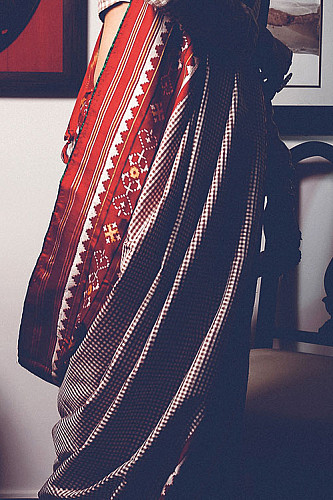Tracing The Heritage of The Patan Patola
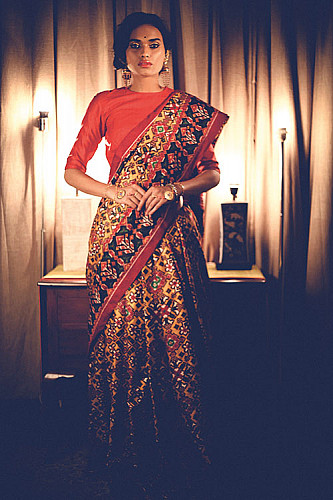
Among the many joys that the handwoven textile affords an enthusiast like me is the fable-fraught history that it unfolds. The story of Patan patola is one that has all the thrills of a page-turner. I have yet to come across a weave that is more mind-boggling in its execution. To begin with, the thread is hand-spun and then dyed, painstakingly, in five colours with mathematical precision, after which it is woven with a technique that yields the sari to be completely and seamlessly reversible.
My journey to Patan invariably starts with filling up a flask with delicious tea from a stall opposite Keshav Bagh in Ahmedabad, with a promise of a panoramic two-hour drive ahead. I am mindful of my precise destination just like any cautious traveller who knows that a misstep will lead to a trap. Many may have gotten lured into visiting Surendranagar with a promise of ‘cheap’ patola saris. Cheap, these saris surely are, in quality, craftsmanship, raw material and therefore prices when compared to the real deal. I choose to buy some tasty roasted water chestnuts and drive on.
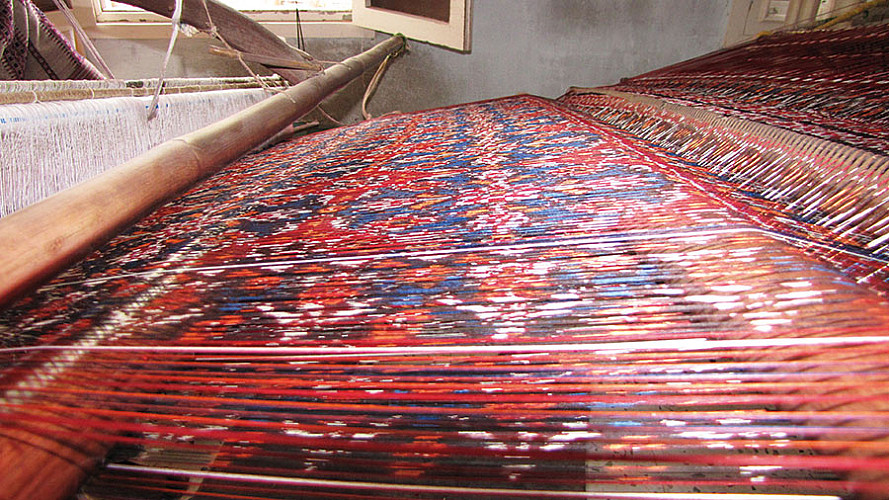
No one knows for sure when this weave was imagined and created but thanks to references stored in the American Museum of Natural History, New York, we know with certainty of its existence since the 13th century. I cherish a tale from 11th-century India with the patola weave at the centre of it. While the rest of the world was engaged in tribal-like barbaric scuffles about mundane things, this battle was fought for an authentic hand-weave. The illustrious King Kumarapala, from his state capital Patan, belonged to the Solanki dynasty. He offered his daily prayers draped in patola-woven yardage that was bought from Jalna in Maharashtra. Now the mischievous king of Jalna made sure to send sullied yardage that was used as his bed sheet to King Kumarapala, until one day, a psychic priest, sensing the impurity of the garment, stopped the king from entering the temple. Naturally, the king was so enraged with the evidence of such malicious slander that he did not undertake his daily ablutions with diligence. He attacked the erring king of Jalna and defeated him. As spoils of war, 700 patola weavers, the Salvis, were uprooted from Jalna and settled, with due respect, in Patan.
The patola weave was always considered auspicious, though how this came about remains a mystery. From priests in Kerala wearing this weave to perform all the temple rituals and young mothers making the beds of infants with it to protect them from the evil eye to a bride draping it as she takes her sacred marriage vows, patola has seeped into daily lives. The saris were created by Hindu weavers for discerning, wealthy patrons and traded by the Muslim Vohra community in South East Asia. A strong and prosperous commerce ensued with countries like Indonesia, Thailand and Cambodia till World War II broke out and led to the trade drying up. It seemed as if the textile would go extinct. Out of hundreds of patola weavers, one family remained who, unlike others that gave up their looms for some humble steady job, collected their inventory and roamed house to house in South Mumbai and sold the saris at a pittance. Though the family had been documenting and filing pictures, along with technical diagrams, for almost three centuries, when faced with the real danger of losing their heritage forever, meticulous archiving of the weaving processes, shade formulae, old woven saris and graphs was urgently undertaken. To let go of the art of their forefathers was never ever an option, either then or now.
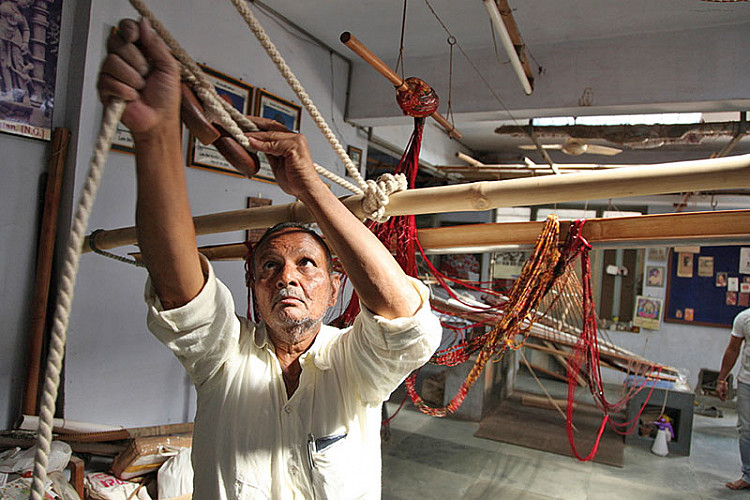
Today, this tiny family of award-winning elders — Rohit bhai and Bharat Salvi — along with their talented youngsters — Rahul and Savan Salvi — are single-handedly immersed in the preservation of the true form of this weave. On the way to the looms, I have a quick dekko at the Salvi-family-owned-and-run museum — Patan Patola Heritage — a first-of-its-kind initiative that houses rarely seen, original sketches of the weaving techniques, as well as priceless antique textile pieces from India and South East Asia that had been preserved due to the happy belief that patola was a true, auspicious heirloom which therefore was handed down generations. What amazes me is the vibrancy of colour and the almost indestructible quality of this weave that can truly face the test of time; and what charms me is that these pieces which have been showcased in the most prestigious museums, like the Smithsonian in Washington DC, are available, free of any charge, to the common man in India.
After World War II, weakening of the economy forced the family to weave saris that were more affordable. Natural dyes had to be given up for cheap chemical ones and the intricate weaves became a little less so. But now, due to the persistent efforts of these keepers of our heritage, many of these weaves have been successfully implemented and continuous research is carried on to procure and revisit vintage pieces that lie forgotten in locked trunks. Extremely mindful of the weight of this legacy, each and every decision of these weavers is informed by the reverence for their forefathers’ name and craft.
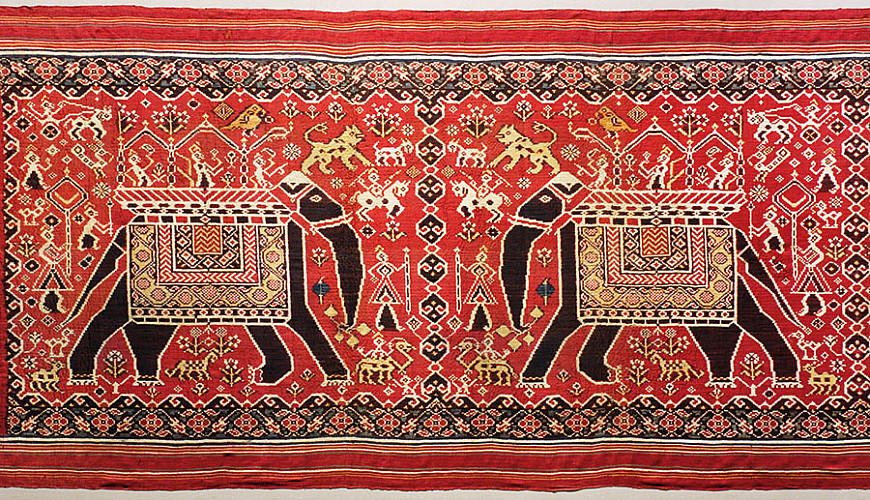
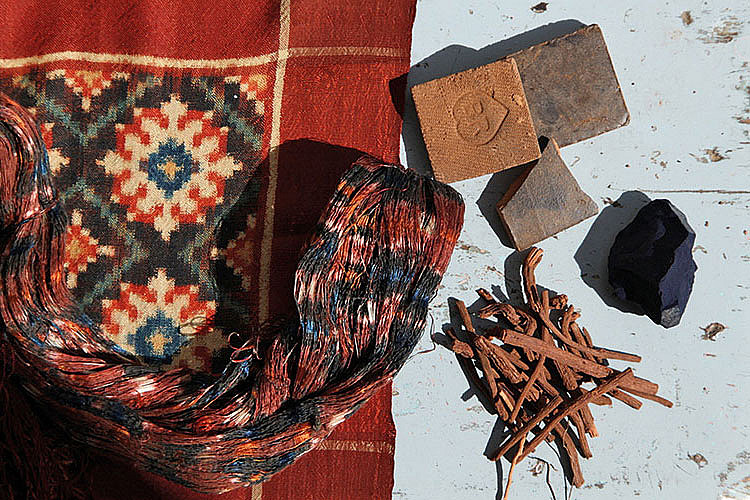
The weaving studio was rife with the fragrance of turmeric and catechu as I settled in next to the loom to admire the sari that was being woven by Bharat bhai. A sacred symbol is drawn on the base of the loom to protect the threads from their eternal enemy — mice. “It will be complete tonight and you can see it when I bring it off the loom,” he said as he patiently pulled each thread to bring the motif into focus. “We have finally been able to get a vibrant red with natural colours,” Rahul shared as we leafed through his book — that seems to be from Hogwarts School — where specimens of flowers, leaves, spices, insects et al, that log the composition of various hues, are pasted. He also shared the samples of work under progress and I am thrilled to see the rare pattern of a whimsical swan.
The studio is also a treasure trove of distinctive books, many of which are out-of-print accounts of hand-weaves from early travellers. The children of the family run in and out of the studio and two-year-old Vashisht, Rahul’s son, shyly waves to me. The humility with which this family shares its knowledge makes one forget that this small group holds the key to the true legacy of the patola. Connoisseurs of the finest taste, from the world over, buy their work even before the threads are dyed. Jaya Bachchan’s impeccable taste in saris has ensured that she is privy to the availability of these rare gems. Soon the completed sari is taken off the loom. Since it has been rolled inch by inch (only about eight inches of a sari is woven in a day) under a protective cloth over the past six months, it lights up the eyes of all present with deep ecstasy and pride when unfurled. In this sari I can get a glimpse of my luxurious heritage that has transcended centuries, nurturing in its folds our sustainable traditions and our unique sense of fashion; it is as fragile as it is profound.
Related posts from Verve:
Verve Trending
Sorry. No data so far.
us on Facebook to stay updated with the latest trends

